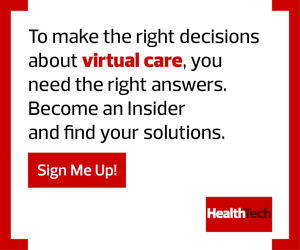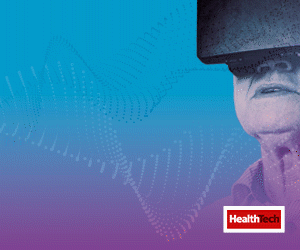1. Patients Will Increasingly Drive the Healthcare Experience
As hospitals continue to handle high-risk cases and work to deliver long-distance care for nonacute cases, there’s an increased need for patients to take a more proactive role in their health. Likewise, more personal technology will be integrated to enhance and address shortfalls in home healthcare delivery.
Organizations are supporting this movement by optimizing and expanding their telehealth programs and setting up digital portals that offer a variety of self-service functions and messaging services.
Efforts to curb readmissions, which have taken on higher importance in recent months, are being bolstered by health IT teams launching and expanding wearables and remote patient monitoring programs to collect and transmit patients’ vital signs from afar. Providers, though, must be ready to handle issues of education and connectivity.
2. Permanent Changes to Hospital Design and Cleaning Technologies
To keep spaces more sanitary, healthcare providers are looking to a host of tools to tackle the critical tasks of deep cleaning and enforcing good hygiene. They’re also changing layouts and check-in processes to reduce clustering and identify contagious visitors before they enter a building.
Deployments may include autonomous robots that emit germ-killing ultraviolet light to decontaminate rooms in 15 minutes and RFID technology to track how long — and how often — employees wash their hands. More hospitals are using thermal cameras at entryways to detect those with elevated body temperature, a common but not universal symptom of COVID-19.
#HealthIT leaders: Which surveillance tool would most improve the #PhysicalSecurity of your #healthcare facility?
— HealthTech Magazine (@HealthTechMag) October 12, 2020
Expect to see more design changes to buildings. These include convertible spaces to accommodate temporary surges in critical-care patients, transparent glass or plastic walls to view isolated patients, retrofitted rooms for delivering inpatient telehealth and tools such as touch-screen kiosks and handheld alert buzzers so people won’t crowd a waiting area before a visit.
3. AI and Automation for Efficiency, Reduced Clinical Burden
As doctors and support staff rush to handle waves of COVID-19 cases while facing reduced staff due to illness or mandated isolation, they’ll increasingly look to solutions that can handle some of the work — or anticipate a need before it develops.
The need for efficiency and touch-free interactions has the potential to boost clinical use of natural language processing — a branch of AI that allows computers to understand spoken remarks — by seamlessly transmitting data into a patient’s electronic health record. Alternatively, automated services such as symptom-checking chatbots will continue to ease administrative bottlenecks.
High-level uses of AI will evolve to deliver personalized care, several HIMSS20 panelists noted earlier this year. These may include algorithms and machine learning that can accurately detect cancer and heart disease, virtual assistants to deliver medication reminders and robot-assisted therapy for recovering stroke patients.
4. Augmented and Virtual Reality Integration Across the Care Spectrum
Being immersed in a virtual world or viewing real-life spaces with digital enhancements is no longer just a game. With the help of headsets and specially designed software, medical professionals are finding wider uses for augmented and virtual reality. The closure of classroom and clinical spaces during the pandemic underscores the potential.
Options include lifelike surgical training programs, supplemental clinical experiences for nursing students, distraction for pain management and even the ability to view images with a new and detailed perspective (clinicians at the George Washington University Hospital, for instance, recently used VR to analyze the lung scans of a COVID-19 patient).
VR also is also poised to gain traction in senior care communities. Although activities such as virtual travel and avatar-led chat rooms might seem like fun, the engaging and memory-triggering encounters can also be highly therapeutic. The technology, which can be used solo or in a group, opens up a new world for older adults during quarantine.













